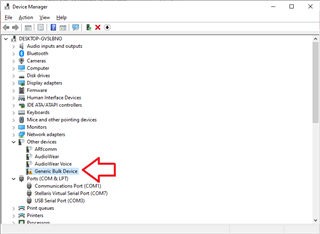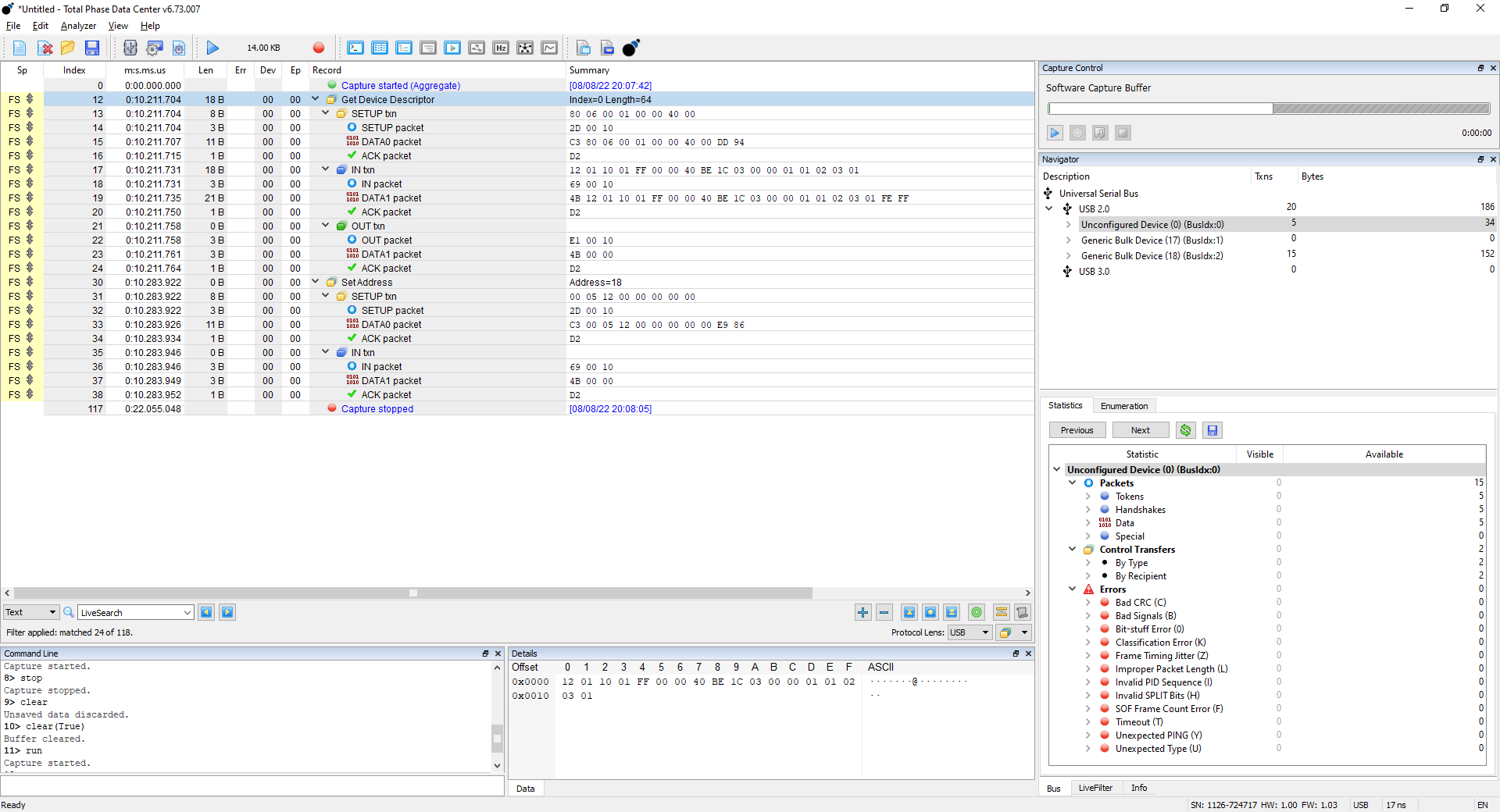Hello,
I am trying to figure out how to approach a USB project with a Tiva MCU. I need to transfer with the MCU as a device using bulk transfers. This way I can utilize the most bus bandwidth available. I'm using USB 2.0 and would like to write a python application to connect and test the firmware. I am seeing both bulk transfer examples such as the example in Tivaware usblib which is very helpful. But I'm also seeing a lot of people use the MSC device class. I want windows 10 to recognize the interface automatically with no required user driver installation to communicate to the MCU (using the bulk transfers).
So as a first step I'm trying to figure out the following:
1. Can you run an MCU in USB 2.0 device mode like this as a MSC mass storage device? If so does this makes sense?
2. Does the tivaware usblib bulk transfer example require a custom driver on the host side? I notice my device manager shows a generic bulk device, but I have a yellow warning sign on it.

3. Does the mass storage device class require there be a filesystem on the device? I have only seen this used with USB drives which look like a drive with a filesystem.
The top level view of this project is to use bulk transfers to communicate between a host Python application and the MCU. The customer/end user can't install any drivers or supporting software/libraries/dependencies. So I need the device setup in a way that leverages standard windows 10 supporting libraries/drivers for communication.
Any help is greatly appreciated!
Thanks!


